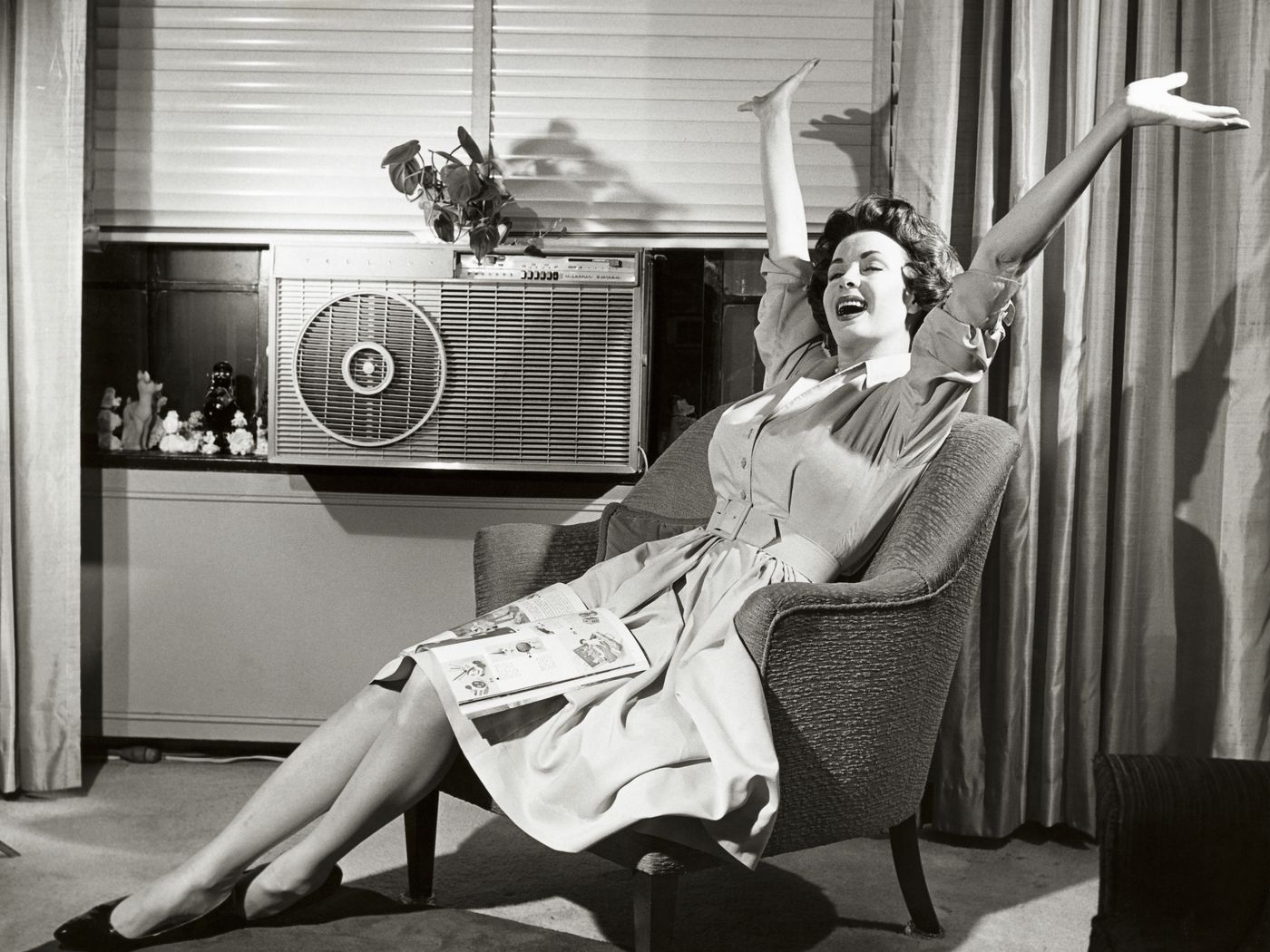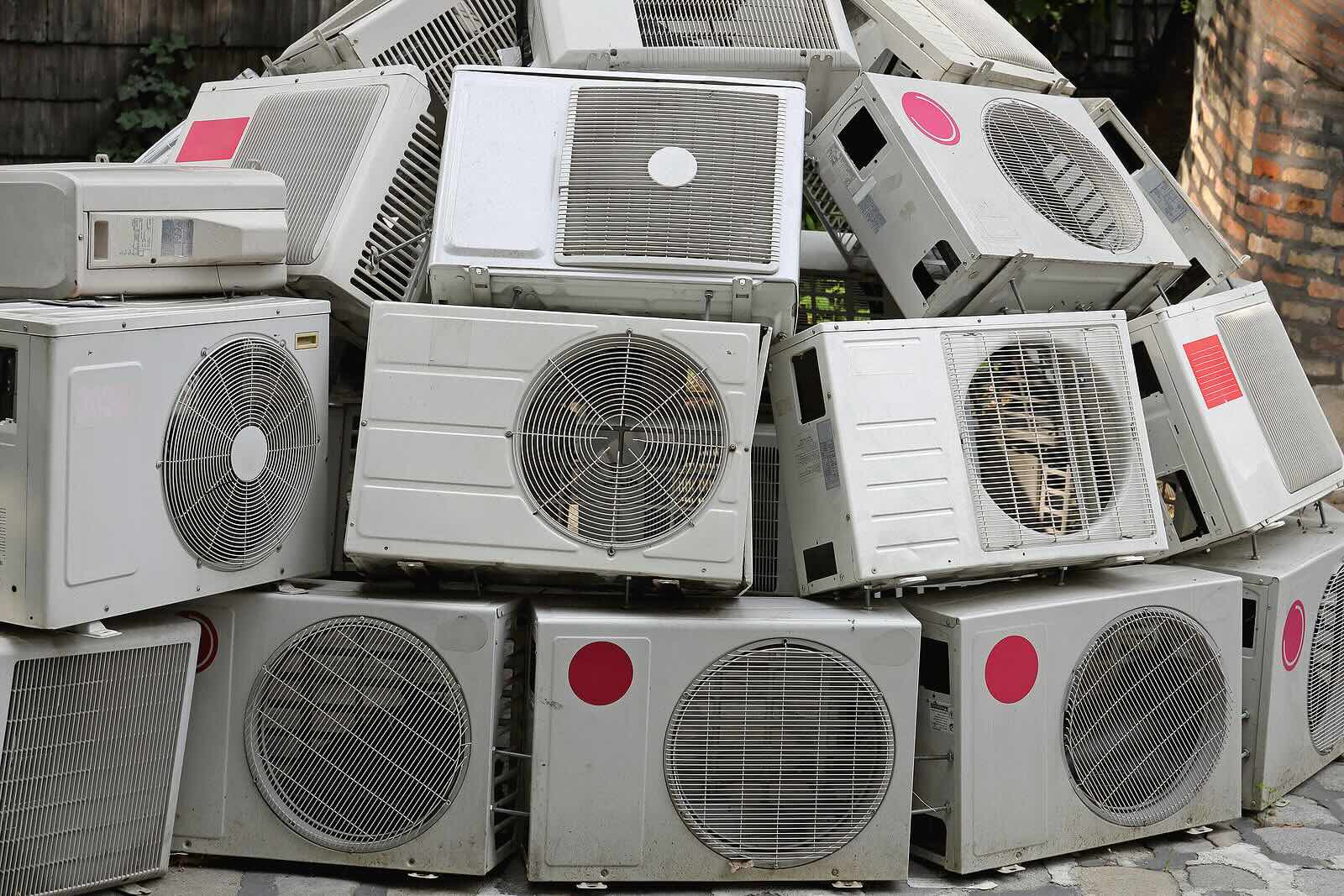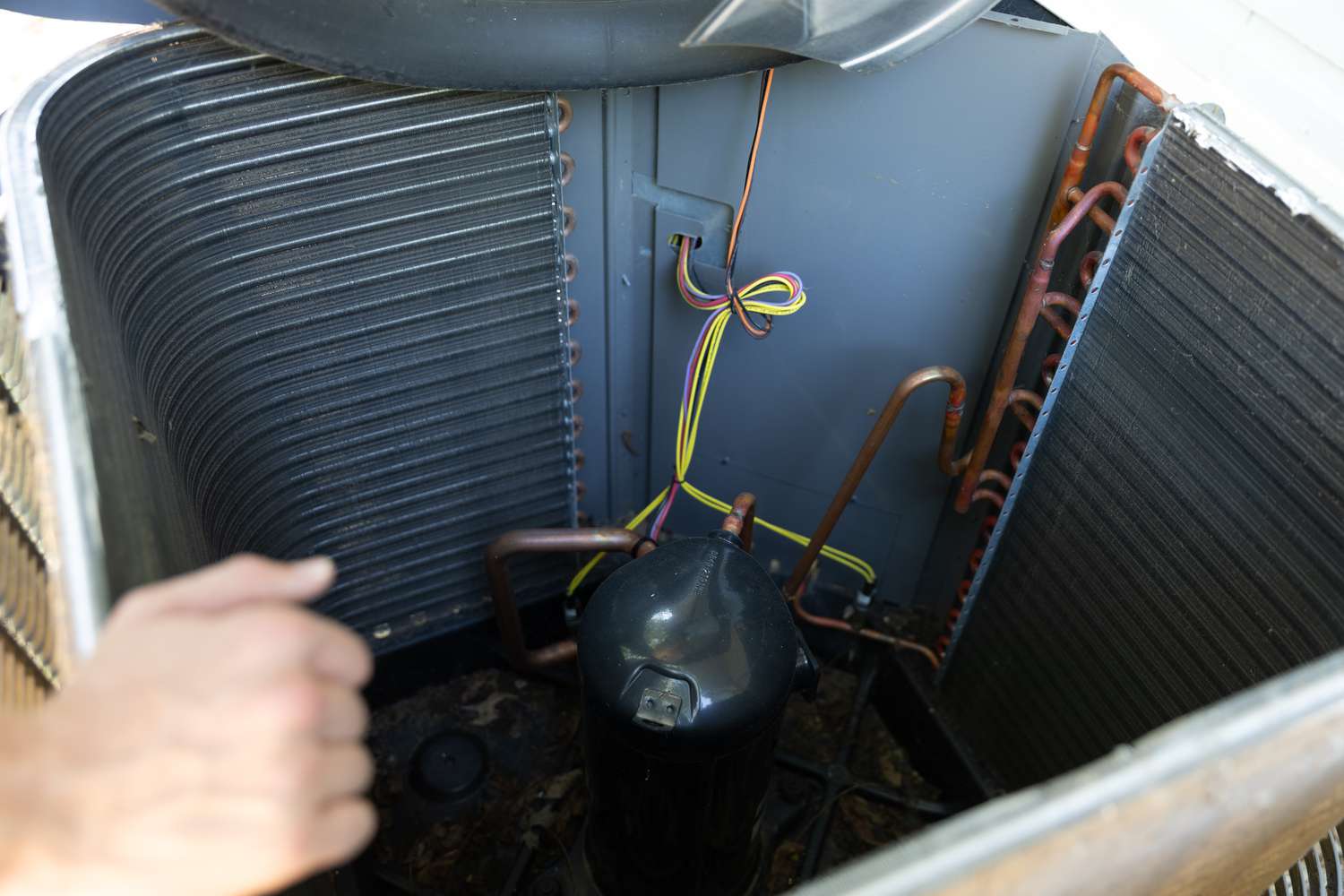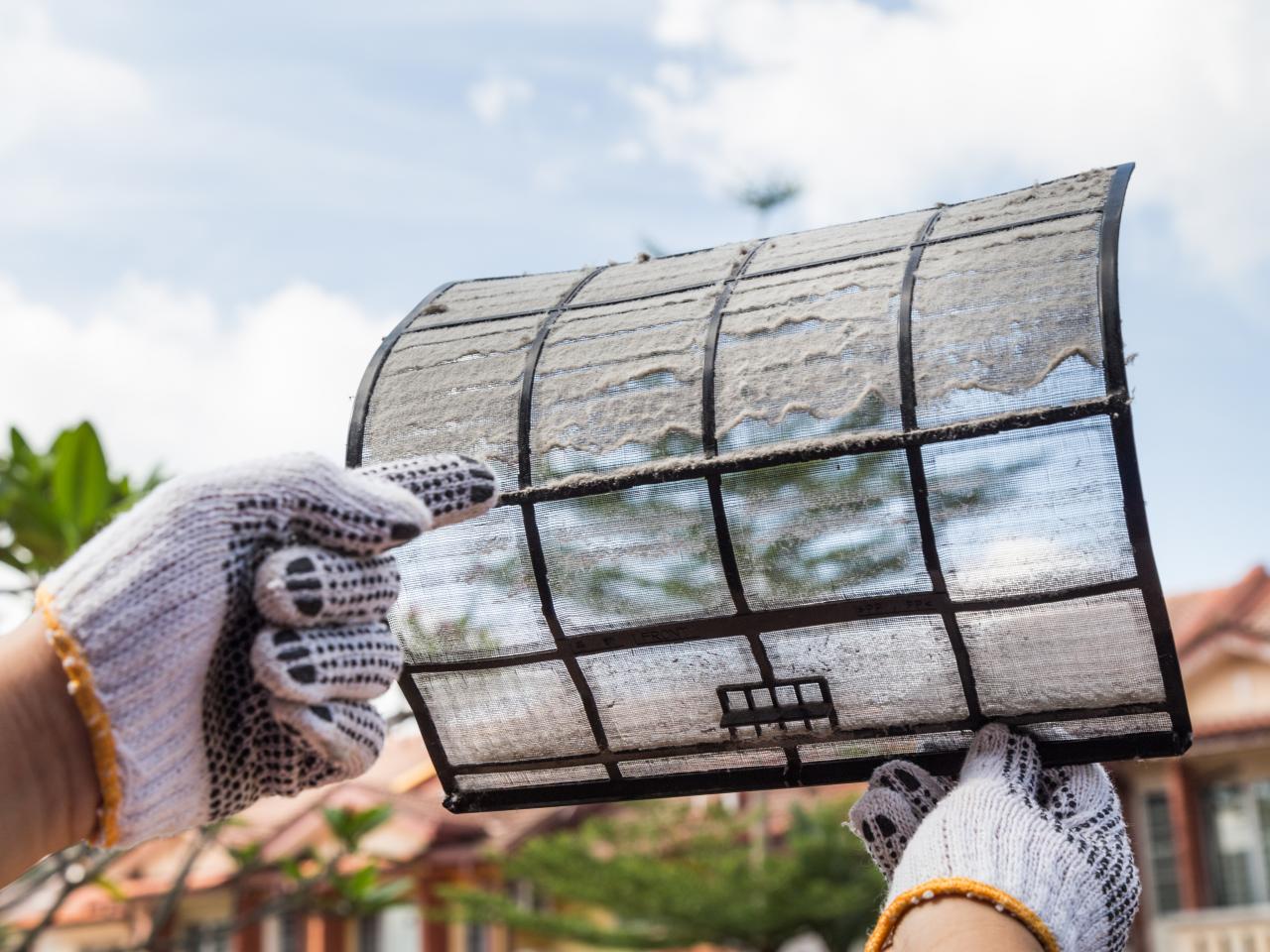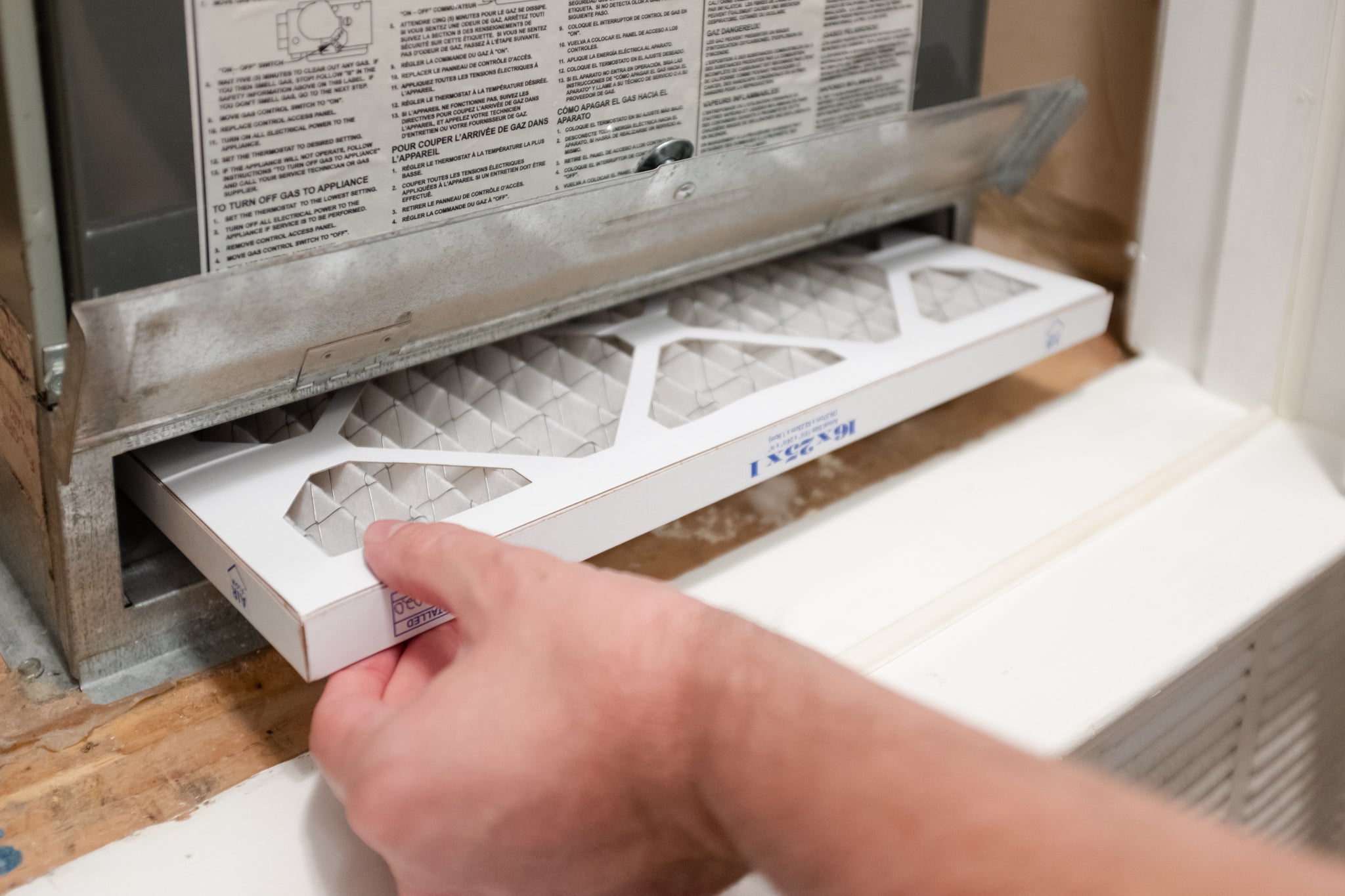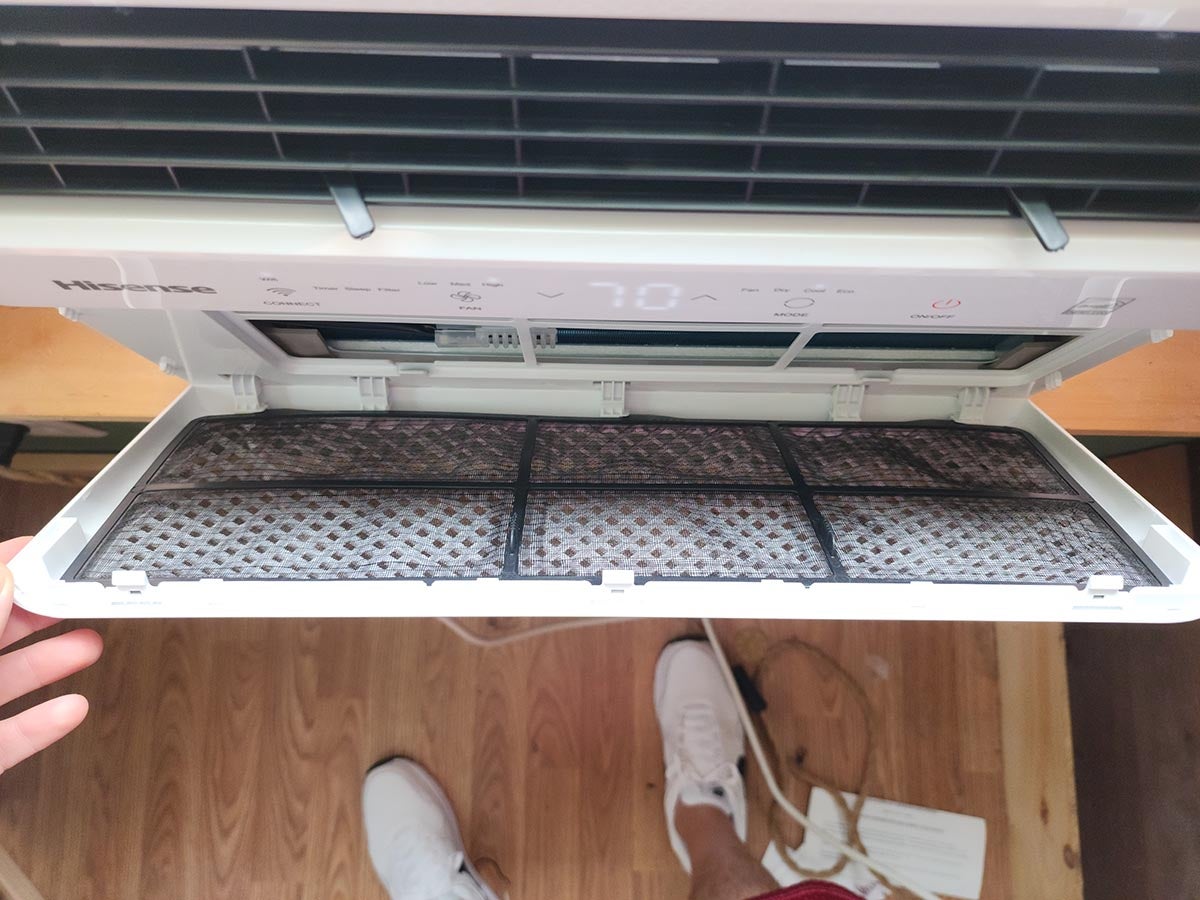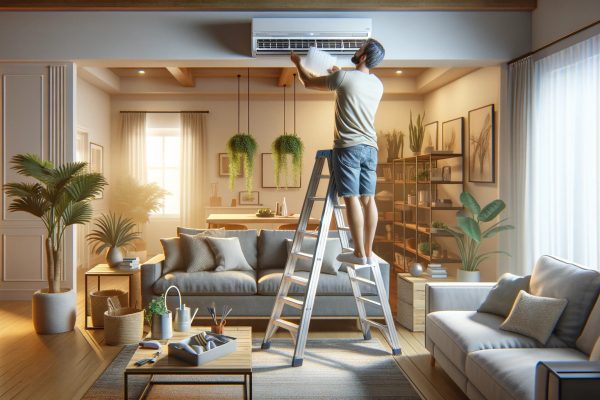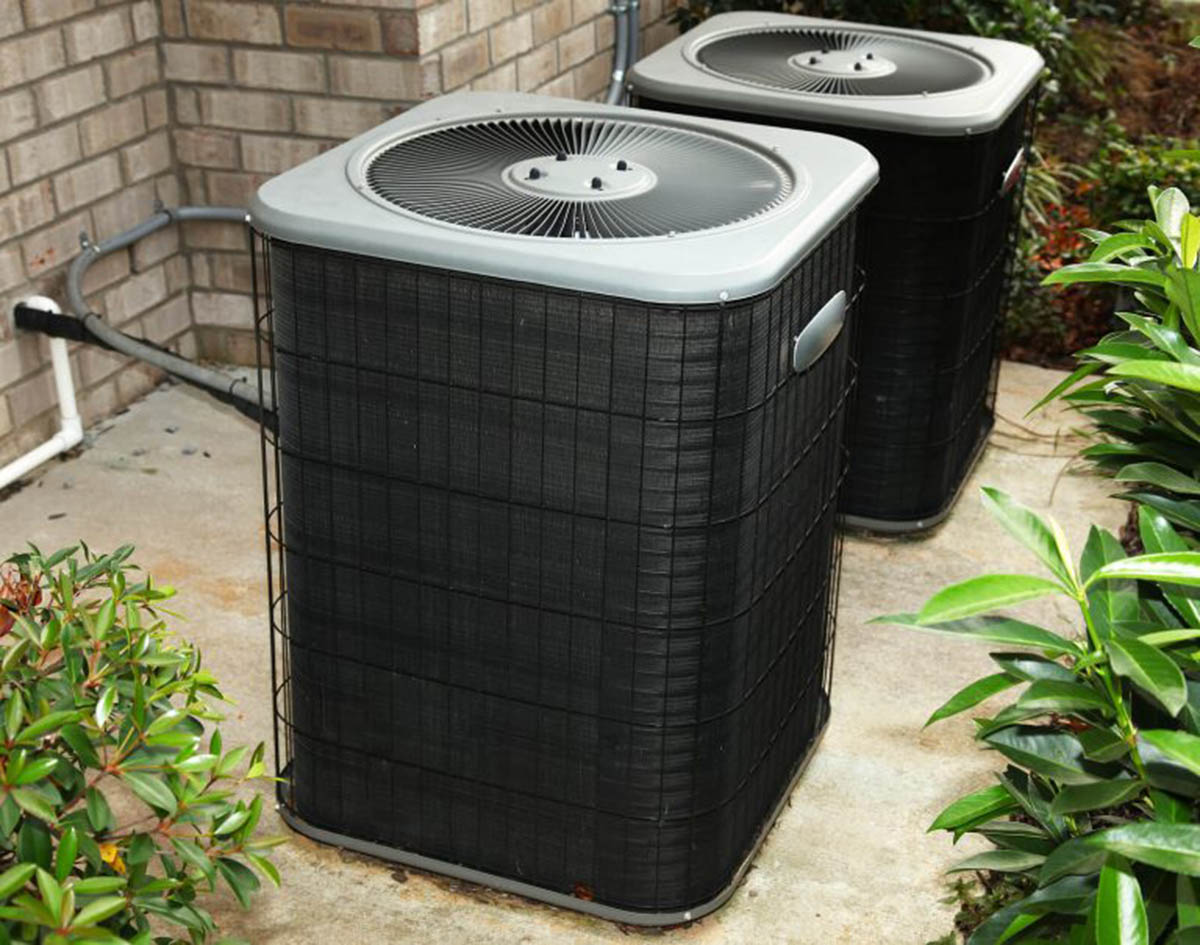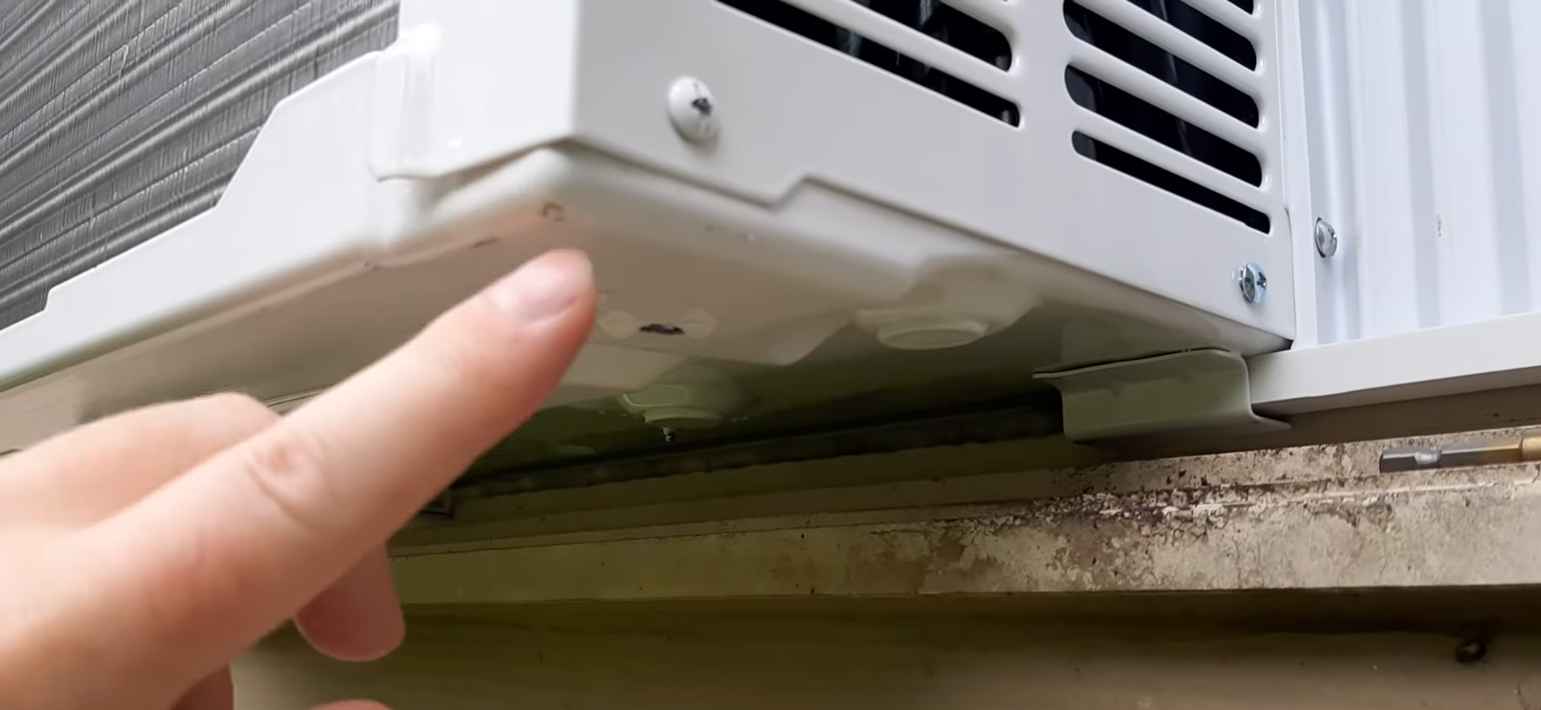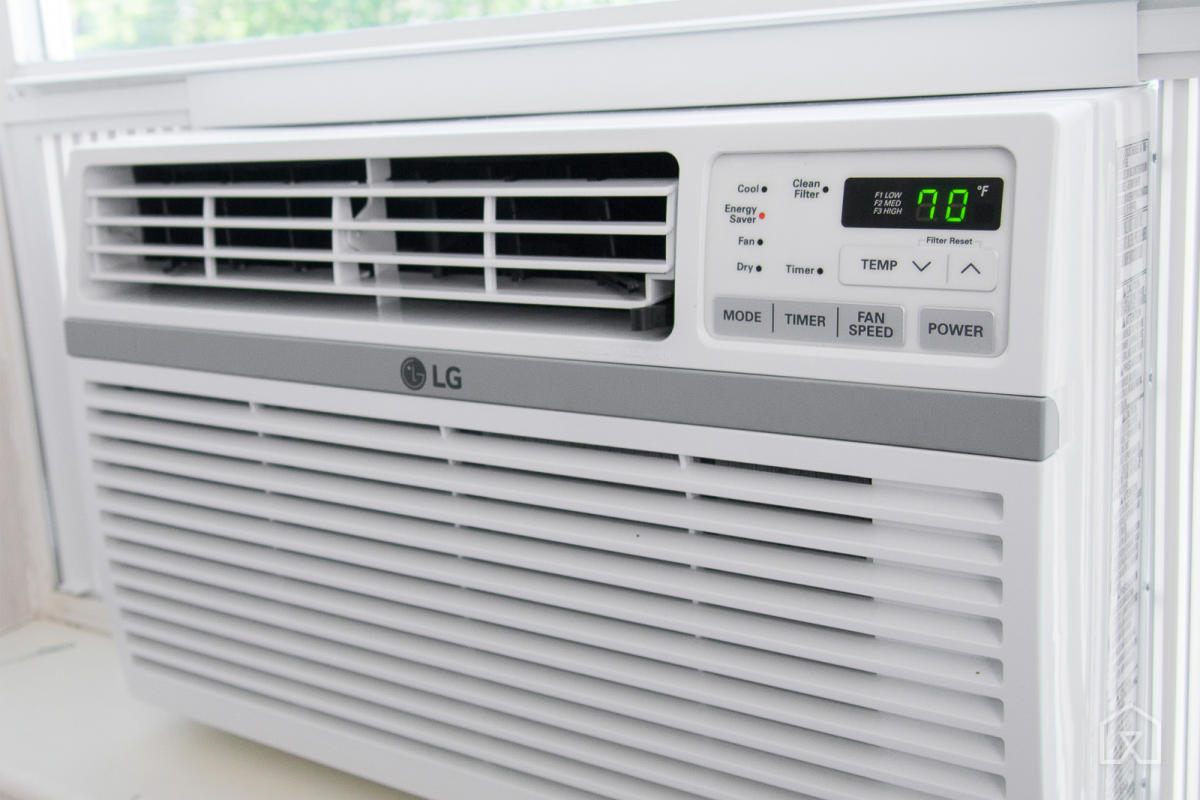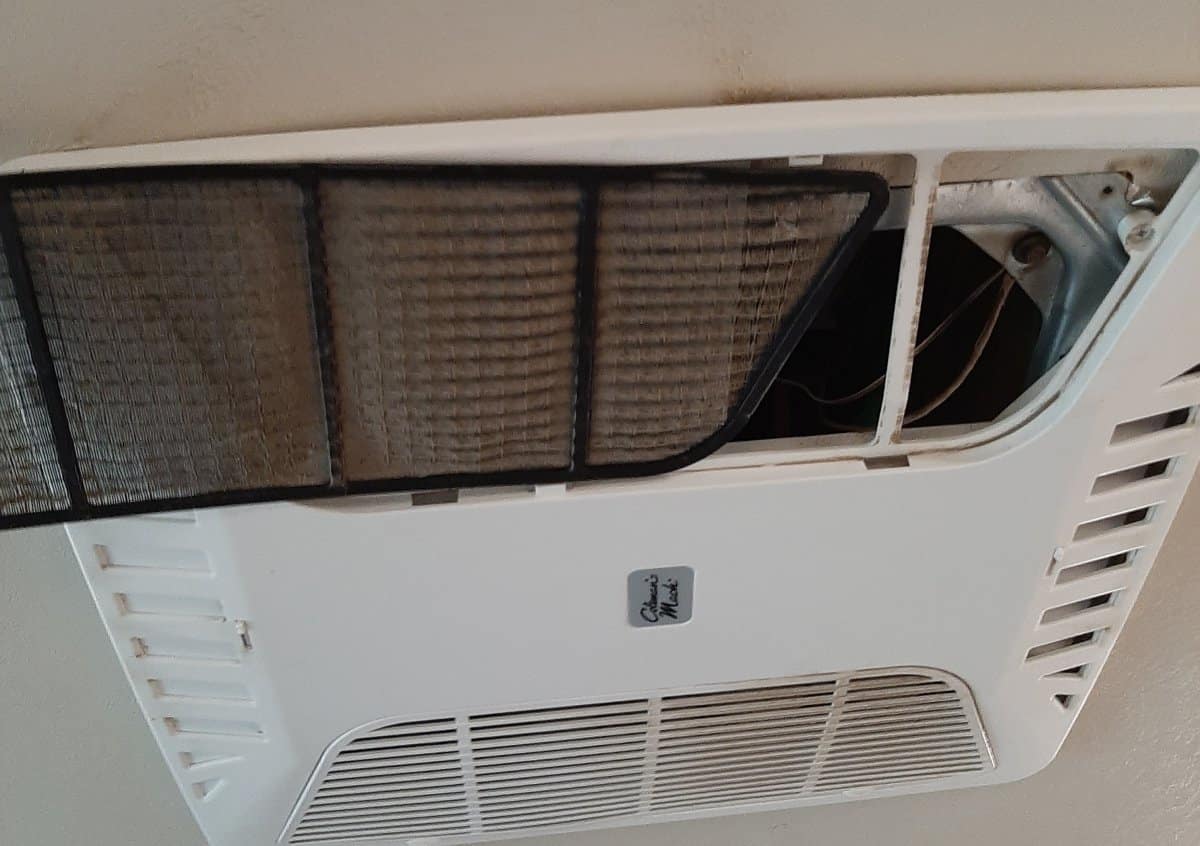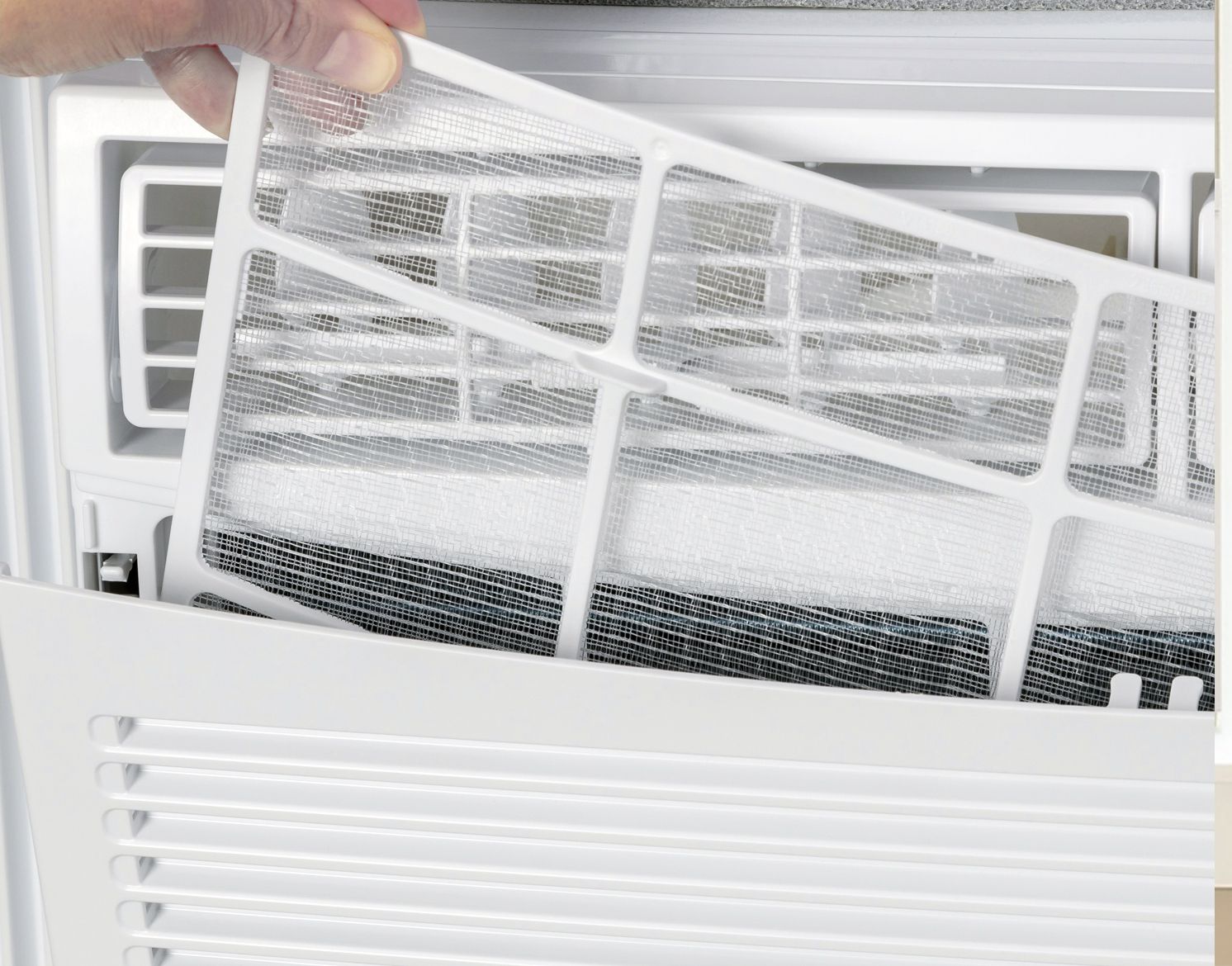Home>Home Maintenance>Where Is The Air Conditioner Filter
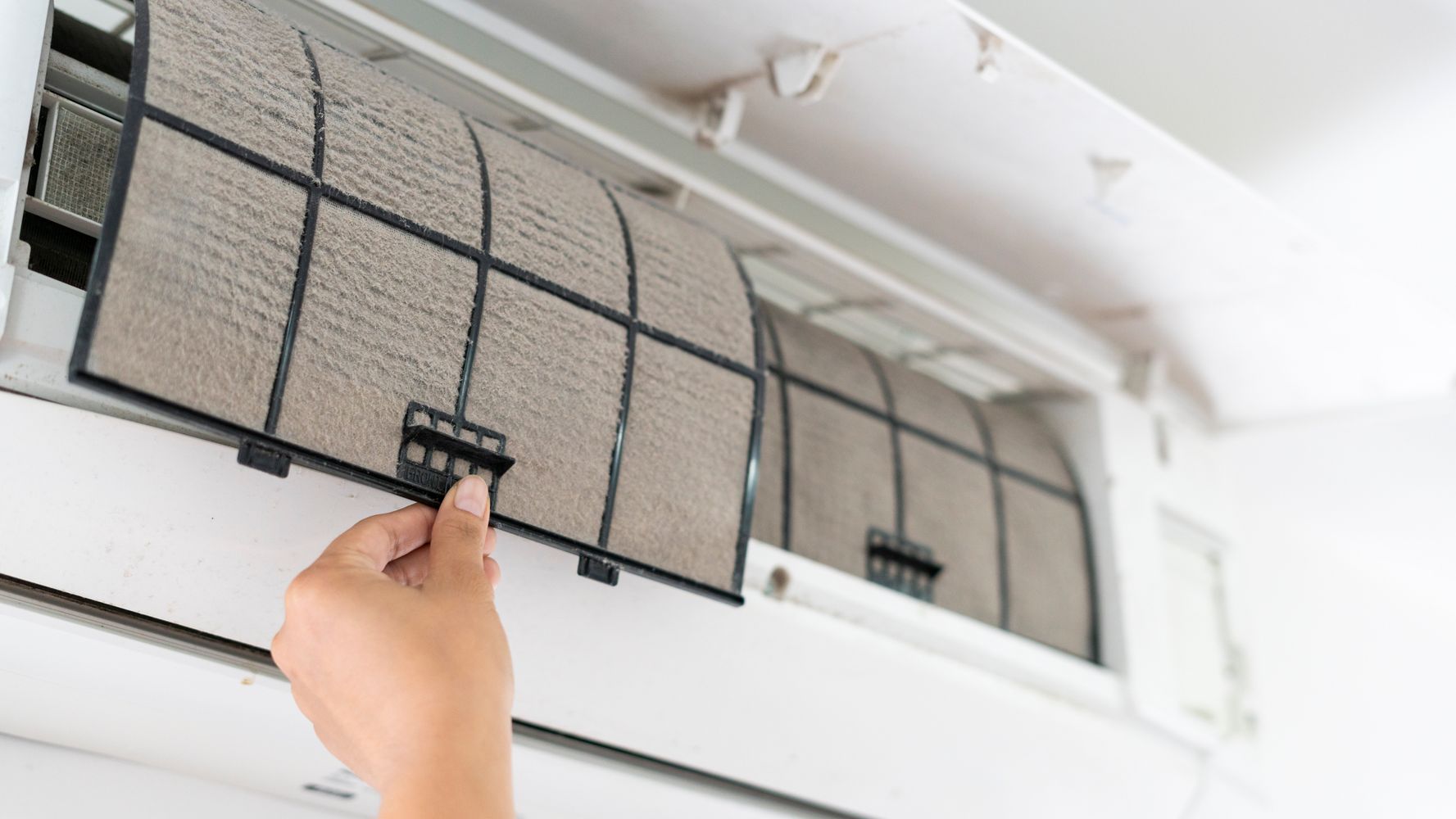

Home Maintenance
Where Is The Air Conditioner Filter
Modified: March 7, 2024
Are you wondering where the air conditioner filter is located in your home? Find out the answer and more with our informative home maintenance guide.
(Many of the links in this article redirect to a specific reviewed product. Your purchase of these products through affiliate links helps to generate commission for Storables.com, at no extra cost. Learn more)
Introduction
Welcome to our comprehensive guide on air conditioner filters and their location. Whether you’re a homeowner or just curious about the inner workings of your cooling system, understanding the importance and whereabouts of the air conditioner filter is crucial. In this article, we’ll explore what exactly an air conditioner filter is, why it’s important, and how to locate and maintain it.
An air conditioner filter is a key component of your cooling system. Its primary function is to remove pollutants, dust, debris, and allergens from the air, ensuring that the air circulated in your home is clean and healthy. While the main purpose of the filter is to improve indoor air quality, it also plays a crucial role in the overall efficiency and longevity of your air conditioner.
With regular use, air conditioner filters can become dirty and clogged, impacting the performance of your cooling system. Therefore, finding and maintaining the filter is essential for the optimal operation of your air conditioner and for preserving the quality of the air you breathe.
Now, you may be wondering where exactly the air conditioner filter is located. The location can vary depending on the type and model of your air conditioner, but we’ll cover the most common areas where you can find it. By the end of this article, you’ll be well-equipped to locate, clean, and replace your air conditioner filter, ensuring that your cooling system runs smoothly and efficiently.
So, let’s dive into the details and explore the different ways to find and care for your air conditioner filter!
Key Takeaways:
- Regularly cleaning or replacing your air conditioner filter is crucial for maintaining clean indoor air, improving cooling efficiency, and extending the lifespan of your cooling system.
- Signs of a dirty or clogged air conditioner filter include reduced airflow, increased energy consumption, visible dust and debris, and more frequent cycling. Regular maintenance is key to avoiding these issues.
What is an air conditioner filter?
An air conditioner filter is a component in your cooling system that is responsible for trapping airborne particles as the air circulates through the unit. It acts as a barrier, capturing dust, pollen, pet dander, mold spores, and other pollutants, preventing them from being released back into the air you breathe. Filters are typically made of materials like fiberglass, pleated paper, or other synthetic fibers that can effectively trap these contaminants.
The filter’s primary function is to improve the indoor air quality by removing these particles, which can cause allergies, respiratory issues, and other health problems. It also helps to keep your air conditioner running efficiently by preventing dirt and debris from accumulating on the cooling coils or other sensitive parts of the system.
There are different types of air conditioner filters available, ranging from basic disposable filters to more advanced and durable options. The efficiency of a filter is measured by its MERV (Minimum Efficiency Reporting Value) rating, which indicates how effective it is at trapping particles. Higher MERV ratings indicate better filtration, but it’s important to note that a higher-rated filter may also restrict airflow, so it’s crucial to balance filtration efficiency with the needs of your specific cooling system.
Regularly cleaning or replacing the air conditioner filter is essential to maintain its effectiveness. Over time, the filter can become clogged with particles, reducing its ability to capture pollutants. This can lead to decreased indoor air quality and strain on your air conditioner, as it has to work harder to push air through the clogged filter. As a general guideline, it’s recommended to check and clean or replace your air conditioner filter every 30 to 90 days, depending on factors such as usage and the presence of allergens or pets in your home.
Now that we have a better understanding of what an air conditioner filter is and its purpose, let’s move on to exploring why it’s important to keep it in good condition.
Why is the air conditioner filter important?
The air conditioner filter plays a crucial role in maintaining not only the indoor air quality but also the efficiency and longevity of your cooling system. Here are several reasons why the air conditioner filter is important:
- Cleaner and healthier indoor air: The primary function of the air conditioner filter is to trap airborne particles such as dust, pollen, pet dander, mold spores, and other contaminants. By removing these particles, the filter helps improve the indoor air quality, making it cleaner and healthier for you and your family. This is especially beneficial for individuals with allergies, asthma, or respiratory issues.
- Protection for your cooling system: The air conditioner filter acts as a barrier, preventing dirt, dust, and debris from entering the cooling system. If these particles were to accumulate on the cooling coils, they could obstruct airflow and reduce the system’s efficiency. Moreover, a clogged filter can cause the air conditioner to work harder, leading to increased energy consumption and potential strain on the components.
- Improved energy efficiency: When the air conditioner filter is clean, it allows for better airflow throughout the system. This means that the cooling system doesn’t have to work as hard to circulate the air, resulting in improved energy efficiency. A clogged filter, on the other hand, restricts airflow, forcing the system to consume more energy to achieve the desired temperature, which can lead to higher energy bills.
- Extended lifespan of your air conditioner: By regularly cleaning or replacing the air conditioner filter, you can help prolong the lifespan of your cooling system. A clean filter ensures that the system operates smoothly, without the added strain of pushing air through a clogged filter. This reduces the risk of breakdowns and costly repairs, ultimately saving you money in the long run.
- Prevention of ice formation: In some cases, a dirty or clogged air conditioner filter can cause ice to form on the cooling coils. This occurs when the restricted airflow causes the evaporator coils to become too cold, leading to condensation freezing on the coils. Ice formation can impede the system’s performance and potentially damage the components.
To reap the benefits mentioned above, it’s crucial to regularly inspect, clean, or replace your air conditioner filter. In the next section, we’ll explore the common locations where you can find the air conditioner filter in your cooling system.
Common locations for the air conditioner filter
The exact location of the air conditioner filter can vary depending on the type and model of your cooling system. However, here are some common areas where you can typically find the air conditioner filter:
- Return air grille: Many air conditioners have the filter housed in the return air grille, which is usually located on a wall or ceiling. To access the filter, you’ll need to remove the grille, which is often held in place by screws or clips.
- Furnace cabinet: If you have a central air conditioning system that shares ductwork with your heating system, the air filter may be located inside the furnace cabinet. In this case, you’ll need to open the furnace cabinet to access the air conditioner filter.
- Air handler unit: For some cooling systems, particularly those in commercial buildings or larger residential setups, the air conditioner filter can be found in the air handler unit. This unit is generally located in a utility room or mechanical closet, and the filter can be accessed by removing a panel on the unit.
- Ductwork: In certain systems, the air conditioner filter is placed directly inside the ductwork, typically near the air intake. This setup is more common in commercial HVAC systems, but can also be found in some residential systems. Accessing the filter in this case may require opening a service panel or accessing the ductwork from an access point.
- Window or portable units: If you have a window air conditioner unit or a portable air conditioner, the filter is usually located behind a panel on the unit itself. To access it, you’ll need to remove the front cover or grille.
It’s important to note that these are general locations, and the specific placement can vary depending on the manufacturer and the design of your air conditioning system. To determine the exact location of your air conditioner filter, it’s best to consult the user manual or reach out to the manufacturer for guidance.
Now that you have an idea of where the air conditioner filter may be located, let’s move on to the next section to learn how to locate it in your specific cooling system.
How to locate the air conditioner filter
Locating the air conditioner filter in your cooling system may require some detective work, but with a few simple steps, you’ll be able to find it. Here’s a step-by-step guide to help you locate the air conditioner filter:
- Consult the user manual: The first and most reliable source of information is your air conditioner’s user manual. It should provide detailed instructions on the location of the air conditioner filter specific to your model.
- Inspect the return air grille: If you have a forced-air system, start by examining the return air grille. This grille is usually located on a wall, floor, or ceiling and is responsible for drawing in air for circulation. Look for any screws, clips, or latches that may be holding the grille in place. Once removed, you should be able to see the air filter behind it.
- Check the furnace cabinet: If your air conditioning system shares ductwork with your heating system, the air conditioner filter may be located inside the furnace cabinet. Locate the access panel on the furnace cabinet and remove it to reveal the air filter. The filter may be housed in a dedicated slot or secured with clips.
- Inspect the air handler unit: For larger cooling systems or commercial setups, the air conditioner filter may be located in the air handling unit. This unit can usually be found in a utility room or mechanical closet. Look for any panels or covers that can be removed to access the air filter. Consult the user manual or contact a professional if needed.
- Check the ductwork: In some systems, the air conditioner filter is placed directly inside the ductwork, typically near the air intake. Look for a service panel or access point along the ductwork. Open the panel or access point to find the filter.
- Inspect window or portable units: If you have a window air conditioner unit or a portable air conditioner, finding the filter is usually straightforward. Check the front panel or grille of the unit for any latches or clips. Once released, the filter should be easily accessible.
If you’re unable to locate the air conditioner filter or are unsure about the specific steps for your cooling system, it’s recommended to consult a professional HVAC technician who can assist you in finding and servicing the filter.
Now that you know how to locate the air conditioner filter, let’s move on to the next section to learn some tips for identifying and accessing it more effectively.
The air conditioner filter is typically located behind the return air grille or inside the air handler unit. Check the owner’s manual for specific instructions on how to access and replace the filter. Regularly changing the filter helps maintain good air quality and efficient operation of the air conditioner.
Read more: Where Is The Fuse For The Air Conditioner
Tips for identifying and accessing the air conditioner filter
Identifying and accessing the air conditioner filter may seem daunting, but with a few helpful tips, you’ll be able to locate and maintain it with ease. Here are some tips to assist you:
- Understand your cooling system: Familiarize yourself with the type and model of your air conditioning system. Different systems may have different filter placements, so understanding your specific system will make it easier to identify the filter location.
- Check the user manual: The user manual is an invaluable resource for finding the air conditioner filter. Refer to it for specific instructions and diagrams related to your system.
- Inspect the return air grille or access panel: Begin your search by examining the return air grille or access panel. Look for any latches, screws, or clips that may be securing the grille or panel in place. Use the appropriate tools to remove them and access the filter.
- Look for filter labels or indicators: In some cases, filters may have labels or indicators to help with identification. Look for labels that indicate the size, type, or model number of the filter, as this can provide valuable information when it comes time to replace it.
- Don’t be afraid to ask for help: If you’re still having trouble locating or accessing the air conditioner filter, don’t hesitate to reach out to a professional HVAC technician. They have the expertise and experience to assist you and can make the process much easier.
- Use proper safety precautions: Before attempting to access the air conditioner filter, make sure to turn off the power to the system. This will prevent any potential accidents while working near electrical components.
- Inspect and clean regularly: Once you’ve located the filter, make it a habit to inspect and clean it on a regular basis. Follow recommended maintenance guidelines, such as cleaning or replacing the filter every 30 to 90 days, or as advised by the manufacturer.
By following these tips, you’ll be able to confidently identify and access the air conditioner filter in your cooling system. Remember, if you’re unsure or uncomfortable with any aspect of the process, it’s always best to seek professional assistance.
Now that you know how to locate and access the air conditioner filter, let’s move on to discussing the importance of regular cleaning and maintenance.
Importance of regular cleaning and maintenance
Regular cleaning and maintenance of the air conditioner filter are essential for optimal performance and indoor air quality. Here’s why it’s important to keep up with regular cleaning and maintenance:
- Efficient airflow: A clean air conditioner filter allows for better airflow throughout the system. When the filter becomes dirty or clogged, it restricts the airflow, forcing the air conditioner to work harder to circulate the air. This results in decreased efficiency and potentially higher energy consumption.
- Improved indoor air quality: Regularly cleaning or replacing the air conditioner filter helps maintain good indoor air quality. The filter captures and removes dust, pollen, pet dander, and other pollutants, preventing them from recirculating in your home. This is especially important for individuals with allergies or respiratory conditions.
- Reduced strain on components: A dirty or clogged air conditioner filter can put strain on the system’s components. The increased resistance to airflow can cause the motor, fan, and other parts to work harder, potentially leading to premature wear and tear, and even a higher risk of breakdowns.
- Energy savings: When the air conditioner filter is clean, the system operates more efficiently, requiring less energy to cool your space. This can result in significant energy savings over time and lower utility bills.
- Extended lifespan of the cooling system: Regular maintenance, including cleaning or replacing the air conditioner filter, can help prolong the lifespan of your cooling system. By reducing strain on the components, you can avoid costly repairs and potentially extend the overall life of the system.
- Promote optimal cooling performance: A clean and properly maintained air conditioner filter ensures that cool air can flow freely through the system. This allows your air conditioner to reach and maintain the desired temperature more efficiently and effectively.
To ensure that you reap the benefits of a clean air conditioner filter, it’s important to establish a regular maintenance routine. Check the filter every 30 to 90 days, depending on usage and environmental factors, and clean or replace it as needed.
Remember, maintaining your air conditioner filter is just one part of overall HVAC system maintenance. It’s also recommended to schedule regular professional maintenance checks to ensure that your entire cooling system is in optimal condition.
Now let’s explore some common signs of a dirty or clogged air conditioner filter in the next section.
Signs of a dirty or clogged air conditioner filter
Recognizing the signs of a dirty or clogged air conditioner filter is important for maintaining the efficiency and performance of your cooling system. Here are some common signs that indicate it’s time to clean or replace the air conditioner filter:
- Decreased airflow: One of the first signs of a dirty or clogged filter is reduced airflow from the vents. If you notice weaker airflow or have to set the thermostat to a lower temperature to achieve the same level of cooling, it’s likely that the filter needs attention.
- Increased energy consumption: A clogged air conditioner filter can cause your cooling system to work harder to circulate the air, resulting in increased energy consumption. If you see an unexpected spike in your energy bills, a dirty filter may be the culprit.
- Visible dust and debris: Take a look at the air conditioner filter. If it is visibly covered in dust, dirt, or debris, it’s a clear indication that it needs to be cleaned or replaced.
- More frequent cycling: A dirty filter can cause the air conditioner to cycle on and off more frequently as it struggles to maintain the desired temperature. This frequent cycling can be both inefficient and disruptive to the comfort of your home.
- Strange odors: A clogged filter can lead to musty or stale odors coming from your vents. This is often caused by a buildup of dust, dirt, and other particles trapped in the filter.
- Allergy symptoms: If you or your family members experience increased allergy symptoms, such as sneezing, coughing, or itchy eyes, this may be a sign that the air conditioner filter is not effectively capturing allergens and pollutants.
- Ice formation: A clogged filter can disrupt the airflow and cause the evaporator coils to freeze. If you notice ice forming on the coils or any water leaks around the air conditioning unit, it’s important to address the issue promptly.
If you observe any of these signs, it’s crucial to take action and clean or replace the air conditioner filter. Regular maintenance and timely filter changes will not only improve the functioning and efficiency of your cooling system but also contribute to better indoor air quality.
It’s worth mentioning that some newer air conditioning systems come equipped with filter change indicators or alerts that notify you when it’s time to clean or replace the filter. Refer to your system’s user manual for more information on how to interpret or reset these indicators.
Now that we’ve covered the signs of a dirty or clogged air conditioner filter, let’s move on to answering some frequently asked questions about air conditioner filters.
Frequently Asked Questions about Air Conditioner Filters
Here are answers to some frequently asked questions about air conditioner filters:
- How often should I clean or replace my air conditioner filter?
- Can I clean and reuse my air conditioner filter?
- How do I clean an air conditioner filter?
- What type of filter should I use for my air conditioner?
- Can a dirty air conditioner filter cause damage to my cooling system?
- What happens if I don’t clean or replace my air conditioner filter?
The frequency of filter maintenance depends on various factors such as usage, indoor air quality, and the type of filter. As a general guideline, check your air conditioner filter every 30 to 90 days and clean or replace it as needed.
Whether or not you can clean and reuse your air conditioner filter depends on the type of filter. Some filters are designed to be disposable and should be replaced, while others can be cleaned and reused. Check the manufacturer’s recommendations for your specific filter type.
To clean a washable filter, start by removing it from the unit. Rinse the filter under running water to remove dust and debris. If necessary, use a mild detergent or filter cleaning solution to gently scrub the filter. Rinse it thoroughly and allow it to dry completely before reinstalling.
The type of filter you should use depends on your specific cooling system and your indoor air quality needs. Fiberglass filters are common and more affordable, but they have lower filtration efficiency. Pleated filters or high-efficiency filters with higher MERV ratings offer better filtration but may be more restrictive to airflow. Consider your specific requirements and consult the user manual or a professional to determine the appropriate filter type.
A dirty air conditioner filter can restrict airflow, causing the system to work harder. This can lead to increased energy consumption, reduced cooling efficiency, and strain on the components. Over time, this strain can potentially cause damage to the system, leading to breakdowns or the need for expensive repairs.
If you neglect to clean or replace your air conditioner filter, it can become increasingly clogged with dust and debris. This restricts airflow and reduces the effectiveness of the filter, impacting indoor air quality and cooling efficiency. The strain placed on the system may also lead to higher energy consumption and potential damage to the components.
Remember, following proper maintenance practices and regularly replacing or cleaning your air conditioner filter is crucial for the efficient and reliable operation of your cooling system.
Now that we’ve covered some common questions about air conditioner filters, let’s wrap up this article.
Read more: Where Is The Btu On An Air Conditioner
Conclusion
Understanding the importance and proper care of your air conditioner filter is key to maintaining a clean, healthy, and efficient cooling system. Regularly cleaning or replacing the filter ensures optimal airflow, improves indoor air quality, and extends the lifespan of your air conditioner.
In this article, we’ve covered the basics of air conditioner filters, including their purpose and various types. We’ve explored common locations where you can find the filter in your cooling system, provided tips for locating and accessing it, and highlighted the importance of regular cleaning and maintenance.
By recognizing the signs of a dirty or clogged filter, such as decreased airflow or increased energy consumption, you can take prompt action to clean or replace the filter. Additionally, addressing any issues related to the filter can help prevent damage to your cooling system and potentially save you from costly repairs.
Remember to consult the user manual for your specific cooling system and follow the manufacturer’s recommendations regarding filter maintenance. If you’re unsure or uncomfortable with any aspect of filter care, it’s best to consult a professional HVAC technician for assistance.
By taking the time to care for your air conditioner filter, you’ll enjoy improved indoor air quality, better cooling performance, and potentially lower energy bills. So don’t forget to prioritize regular maintenance, and experience the benefits of a well-maintained air conditioning system.
Thank you for joining us on this journey to learn more about air conditioner filters. Stay cool and breathe easy!
Frequently Asked Questions about Where Is The Air Conditioner Filter
Was this page helpful?
At Storables.com, we guarantee accurate and reliable information. Our content, validated by Expert Board Contributors, is crafted following stringent Editorial Policies. We're committed to providing you with well-researched, expert-backed insights for all your informational needs.
